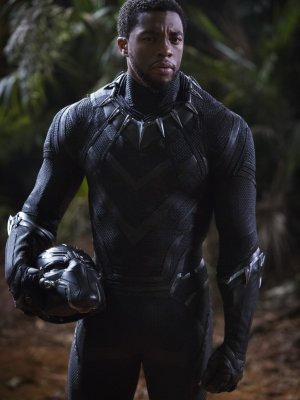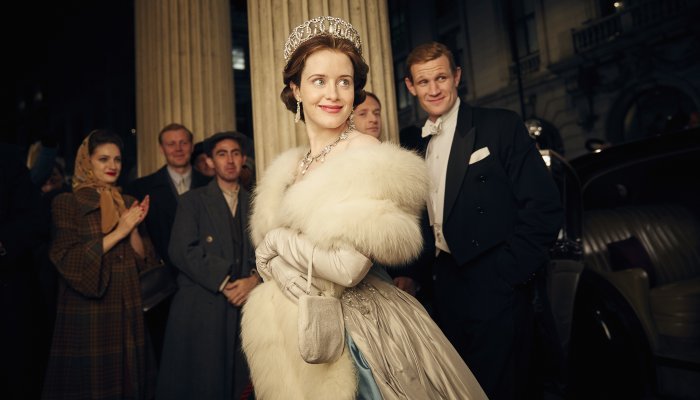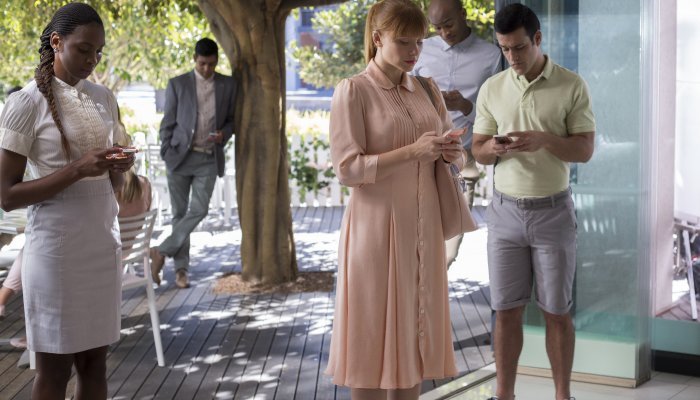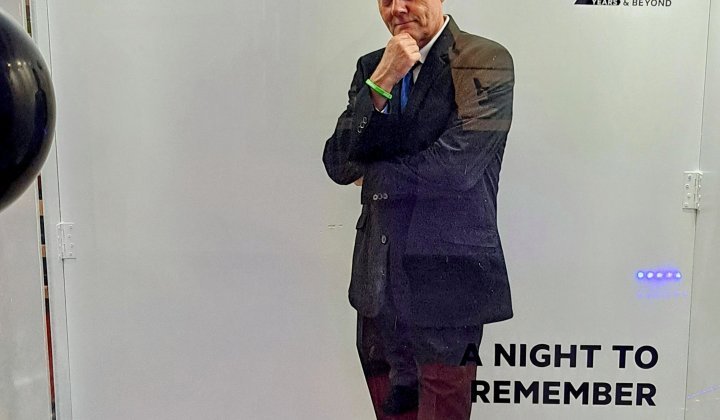How does a film or television series impact the image of the location in which it’s set or shot? This is a question Hannes Engelbrecht, an academic completing his Master’s degree in the Department of Historical and Heritage Studies at the University of Pretoria, is answering in his work.
“One of the fathers of ‘place branding’ is [independent policy advisor] Simon Anholt and he said that place branding is about making a place famous,” Engelbrecht says. “And if you think about it, we don’t know about Central Park or Fifth Avenue because we did extensive research on New York. We know them because we’ve seen them in multiple films.”
Indeed, one of the earliest mentions of boosting a destination’s image with film tourism comes from Nigel Morgan, Annette Pritchard and Roger Pride (authors of the book Destination Branding), who argue that one of the best forms of tourism product placement is to place your destination in a film. This worked well for New Zealand, which, according to a Forbes study in 2012, had a 50% increase in tourism numbers after The Lord of the Rings.
“Whether that’s all because of Hobbits, I wouldn’t venture to guess,” Engelbrecht says. “But it’s got to do with the integrated marketing methods. The movies spotlighted the country and the destination marketing organisation jumped on the opportunity. And then you have something that comes out like ‘Home of Middle Earth’, which is their current slogan. It’s not to say that everyone should go that extreme and make everything fictional into film tourism, but it’s a way of enhancing what you’ve already got in any country.”
Another interesting example of a study done in this regard was by Chieko Iwashita, who sampled Japanese tourists and found that 70% of them indicated that film was a major motivator for their travel to the UK. They went on to identify films with destination-specific content – think quintessentially British titles like Notting Hill – that had a sense of culture and place. For Engelbrecht, this links back to the idea that film becomes a catalyst for showcasing who and what we are as people of the world.
“[Film tourism expert] Stefan Roesch says that fictional film productions tell universal stories which are highly emotional and have a wide reach,” Engelbrecht says. “But destination marketing via film and television is not perceived as promotion or as an ad to come visit. It’s more credible and more ‘autonomous’ if your place is in a film. You can back it up with other ads and campaigns but it has to be linked to that destination. It can be just a stand-in location.”
Fuelling the local film industry’s growth
Things can get more complicated than the Marvel Cinematic Universe when film tourism is to a place where a film is set but not made, like the Twilight saga set in Washington State but filmed in Vancouver or Braveheart, which was filmed in Ireland despite being Scottish to its core. It’s the same in South Africa, even as government incentives and rebates fuel the local film industry’s growth.
...fictional film productions tell universal stories which are highly emotional and have a wide reach.
While movies like the Nigerian title Ten Days in Sun City have a clear link to location, Cape Town is often a stand-in for other places, from Pakistan (Homeland) and Ghana (The Crown) to those that don’t exist, at least not yet (Black Mirror). Similarly, not many people realise that Avengers: Age of Ultron filmed a big fight scene in Johannesburg because the city wasn’t ‘featured’ as itself.
The biggest opportunity right now is for products related to Black Panther...
“What we have in South Africa is a complicated history and it always comes into play,” he admits. “But in many ways, we’ve done film tourism in South Africa for years; we’re just not linking it and spotlighting it and focusing on it. To a certain extent, I’m referring back to The Gods Must Be Crazy and to what it did for travel to the Kalahari and wanting to see that community. It’s positive and negative on how we depict people in film and so forth but, as always with tourism, we need to negate that negative effect on communities.”
Another aspect to be aware of is the potentially negative image that tourists might associate with the country after gritty films like Tsotsi, District 9, and Chappie. “If there’s a negative image being portrayed, maybe don’t shine the light on that as a destination marketing tool,” Engelbrecht advises. “But you can make some products out of that, like the [dark tourism] Jack the Ripper tours in London, which are well attended. For example, you could do a Halloween tour inspired by Resident Evil: The Final Chapter, where the breakout of the zombie plague happens on the Cape Town cable car.”
Opportunities for guides and studios
Tours to locations or sets are an easy option, especially given how popular South Africa is becoming as a destination that has every landscape a production company could wish for and how fascinating many fans would find the process of making a movie or TV show. Other ideas include creating maps for specific films (like the Afrikaans comedy Pad Na Jou Hart), specific regions, or even to areas where celebrities like Trevor Noah or Charlize Theron grew up. All these are opportunities for guides and studios to earn extra income.
“It’s great to see the shift from niche Afrikaans films to those with wider appeal, like Love is a Four Letter Word, but there’s a bit of disjointedness in how we do things,” Engelbrecht says. “Film doesn’t know about tourism and tourism doesn’t know about film; often it’s difficult for us to talk to each other. The advice is to go out and engage with your local film commissions and start developing film tourism products. If you see a film being shot, you need to know which film it is. Locate the spots where each scene was shot so you can start recreating those images. If somebody famous is in town, tweet about it. If there’s a set being built, ask them what’s going to happen afterwards. For example, the Shakaland Zulu Cultural Village in KwaZulu-Natal was bought [from the Shaka Zulu television series] and turned into a tourist attraction.”
New cultural products
The biggest opportunity right now is for products related to Black Panther, the first film to reach over R100m at the South African box office and the reason Hotelscan.com and Hotels.com are both reporting spikes in searches for the fictional nation of Wakanda. “Black Panther is breaking records all over the show and for specific reasons,” Engelbrecht says. “The world is being shown cultural products they haven’t seen before – tradition, fashion and things linked to numerous countries – on a mass scale and in a positive light.”
A challenge relates to copyright and trademark, which is why Engelbrecht suggests that discussions about the usage of specific terms be negotiated upfront. “Nigeria is claiming it with the Nollywood movie Wakanda Forever – I’m not sure if they’re going to get into trouble for that – so all the film tourists from Black Panther will go there first,” he says. “But we can also claim it, perhaps marketing the Eastern Cape as the home of the Wakanda language, advertising tours to the region in between movie trailers at the cinema, or having a competition to win a holiday that links the film to the place.”
Other suggestions from Engelbrecht include talking to the studios about creating a documentary or extra content for DVDs about the area portrayed in the film but with more factual information. There’s also the chance to produce other experiences, like Johannesburg Ballet staging a Black Panther-inspired performance at the Cradle of Humankind, drawing attention to the attraction. The bottom line is simple: “If it’s your cultural product, own it.”
How To: Film tourism in practice
Consider the broader creative industries
In recent years, the economic importance of the creative industries has been recognised, with the United Nations Conference on Trade and Development coining the term ‘the creative economy’. Broadly defined, this includes fine arts, music, publishing, games, festivals, design, architecture, television, and film.
“The creative industry has been recognised in terms of its economic importance for innovation and trade, social inclusion, cultural diversity and environmental sustainability,” says Charlene Herselman, an academic in the University of Pretoria’s Department of Historical and Heritage Studies. “The importance refers to the interface between creativity, culture, economics and technology in the contemporary world.”
Find the links
For the creative industry to play a role in all these sectors, one must find the links as exemplified in the relationship between film and tourism. By showcasing and promoting other creative industries through increased awareness, film tourism also benefits itself in the process.
“Film tourism has been one of the earliest and most prominent examples of these two working together,” Herselman says. “It’s a mutually beneficial relationship with creative industries and tourism each having decided benefits for the other. In terms of tourism, we have the development of tourism potential of destinations. And oftentimes it’s an intangible product. Tour guides take people to a location where filming happened but there’s nothing left so visitors take photos to say they were there and use their imagination to fill in the blanks.”
Spread the benefits
It’s not just that tourism reaps all the benefits. For the creative industries, these partnerships expand the audience for creative products, support innovation, revitalise the creative industry, open up export markets and it promotes professional networks and knowledge development.
“All these benefits of the creative industry can enhance and diversify tourism: from adding new products to using creative technology to develop and enhance the tourism experience,” Herselman says. “A lot of the innovation comes from the creative industry that we can later apply in tourism. It improves the image of countries and regions in the specific context of destination development.”
Bring people together
Once a film project is approved, all the relevant organisations should connect with their counterparts in the tourism industry, which is how it works in the UK.
“When Creative England and Creative Scotland have film productions coming through, they give a ‘heads-up’ to the tourism organisations to tell them about productions that align with the destination image and ask if they want buy-in,” Herselman explains. “They are sent the script, the tourism organisation decides if they want to be part of it, and then they work together with the creative industry and film industry to create products. The reason it works well is because they are mutually beneficial. The film can promote the destination and the destination can promote the film.”
Collaborate and communicate
Unfortunately, the film industry in South Africa is often described as being unapproachable. Herselman believes the problem is because those in tourism don’t necessarily understand how the film industry works and vice versa. And even though it’s not a surprise to her (or anyone) that government departments don’t always work well together, there are still solutions.
“There are certain ways in which we can do things – there are ways that you can get beyond things like copyright and trademark laws – and develop products but we need to go higher up,” she says. “We need to lobby the other decision-makers.”
Be patient
Because the film industry also needs tourist facilities – accommodation, transport, guides – helping them find what they need is one way to get them to return the favour and allow the tourism industry to use their intellectual property for film tourism.
“The Department of Arts and Culture and South African Tourism are going to talk to those production companies and arrange with them that we keep the sets to have some form of tourism associated with it, that we can have usage rights for images to say that a certain film was produced in South Africa, and that we can create the products we want to create for film tourism,” Herselman says. “So things are happening. They’re just happening slowly.”










